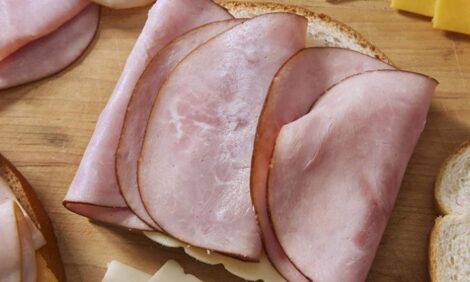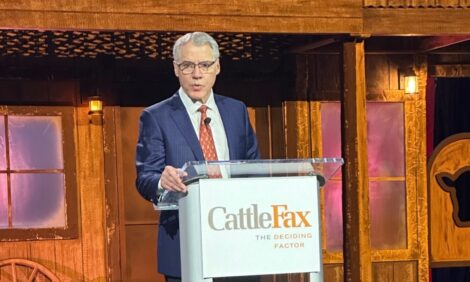



The End of High North American Cattle Prices?
US - US and Canadian cattle prices hit record highs over the last two years, but indications are that the cycle is moving in the opposite direction, says market analyst Anne Wasko of Gateway Livestock of Taber, Alberta, who recently addressed Manitoba beef producers. Angela Lovell reports.US cattle prices peaked in 2014 and remained reasonably strong through most of 2015 until September, when cash prices for live steers fell by almost $23.00/cwt in seven weeks and pushed cattle prices to lows not seen since 2013, when widespread drought in the US squeezed margins for cattle producers.
One of the reasons cattle prices took a dive was because cattle going to slaughter were a lot heavier than usual, which reduced demand from packers.
In Canada, the average steer carcass weight for the entire year was up by around 30 lbs, and the historic year over year increase averages 7 lbs. There are a lot of 1700 and 1800 lb fed cattle in the US and Canada.
US Prices Pull Up Canadian Prices
Because Canadian cattle prices are based on the US market, stronger prices in the US helped pull up cattle prices north of the border. As well stronger than average basis levels - the difference between the Canadian and US cash price - contributed to record high prices for Canadian cattle in 2015.
“Normally fat cows in western Canada trade anywhere from $5 to $15 under the US market because of freight and Country of Origin Labelling costs,” said Ms Wasko. “In 2015 basis levels were strong and fat cattle were selling over the US floor before freight.”
One of the reasons for the higher basis level, which remains strong today, is that Canadian packers were short of supply because more than a million Canadian feeder cattle were exported to the US in 2014. Desperate to keep the cattle in Canada so they can run at full capacity, packers and feedlots bid over the US market.
Even though Canadian beef production fell by 7.5 per cent in 2015, beef exports to the US rose by 6 per cent thanks to a weak Canadian dollar, which make Canadian beef cheaper to import, and also drove higher exports to other key markets, such as China and Hong Kong.
Many Factors Putting Pressure on Cattle Prices
But before Canadian or US beef producers celebrate too much, Ms Wasko cautions that there are a lot of factors weighing in that will continue to put downward pressure on prices, and although there will still be profitability, producers shouldn’t expect to hit the highs seen over the past two years.
US beef exports were down 13 per cent in 2015 due to a strong US dollar, which has also reduced exports of other US meats such as pork and poultry. Meanwhile pork and poultry production has increased and flooded the domestic market with lower priced alternatives to high-priced beef, which is beginning to pressure retail beef prices.
The US cattle herd began to expand in 2014 once normal moisture conditions returned and better cattle prices began to take effect, and that expansion will continue through to 2017. There are signs that the Canadian herd is finally starting to follow suit, with less heifers going to market or being exported a clear signal that producers are retaining heifers to build their herds, many of which were decimated in the years following the BSE crisis in 2003.
So with herd sizes increasing, beef supply will become less and less tight in the coming years. As well, increased US beef, chicken and pork production in 2016 will continue to put pressure on retail beef prices, especially if the US dollar stays strong and continues to restrict exports, creating too much domestic supply.
On the demand side, in Canada retail beef prices remain at record highs, up 15 per cent over 2014. Because supplies are still smaller in Canada retail beef demand will take another jump in 2016, predicts Ms Wasko. But the question is will consumers be less willing to pay high beef prices if they see lower prices in US grocery stores, and there continues to be competition from pork and poultry.
“Retail demand has been exceptional but I think there is more production coming from all three protein sectors and we are going to have to buy some of that demand back and that means cheaper beef,” said Ms Wasko.
Ms Wasko won’t be drawn into predicting North American cattle prices for the year ahead because there are just too many variables, not least exchange rates and trade issues. The markets have also been extremely volatile over the past year.
With the US also entering into an election year, Ms Wasko’s advice to producers is to watch the US dollar index and base their price forecasts on historical basis levels, and be ready to price calves early.
“We saw a lot of forward selling this past summer through some of the satellite and internet sales and I predict more of that in 2016,” she said.
TheCattleSite News Desk


